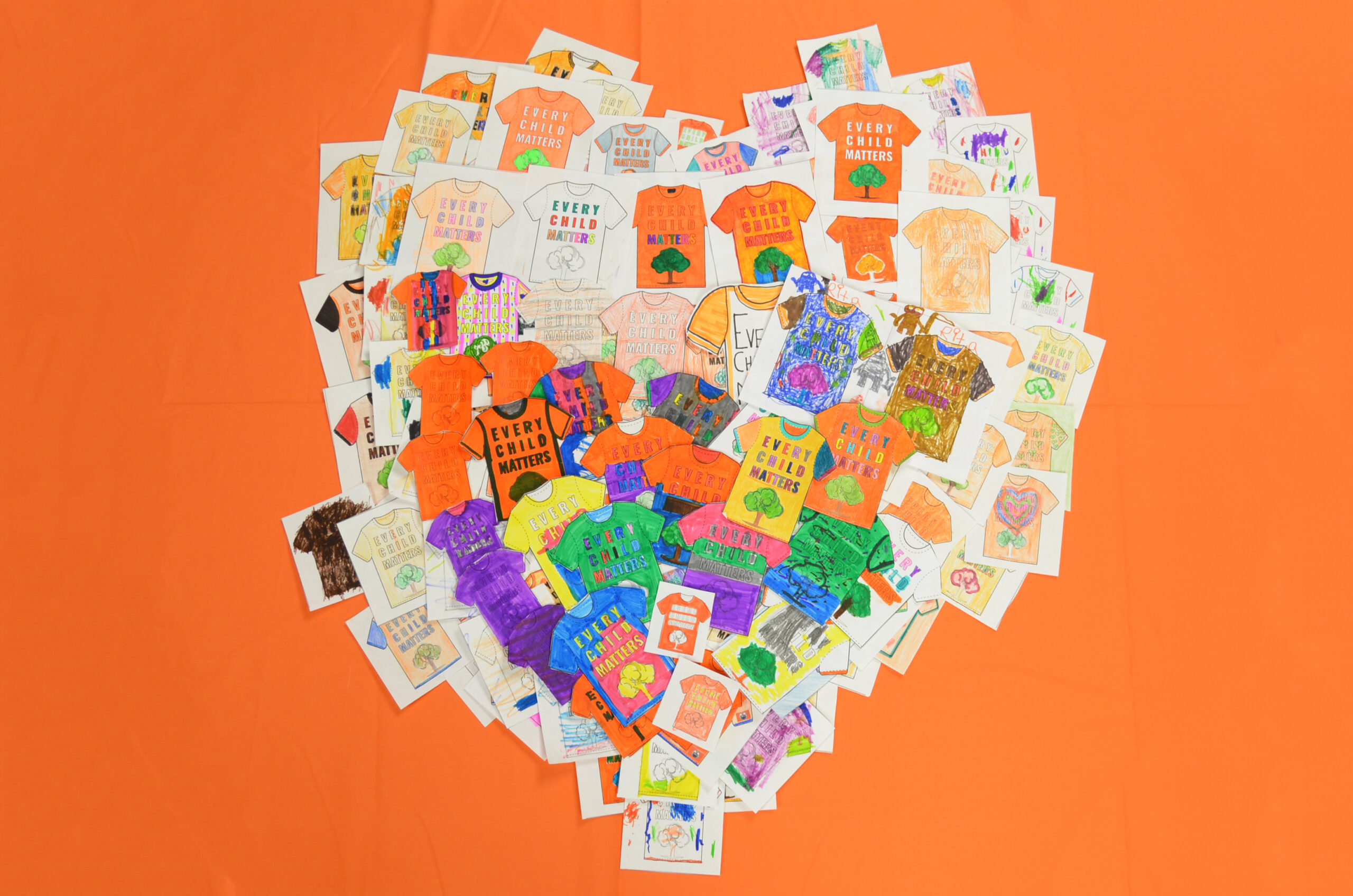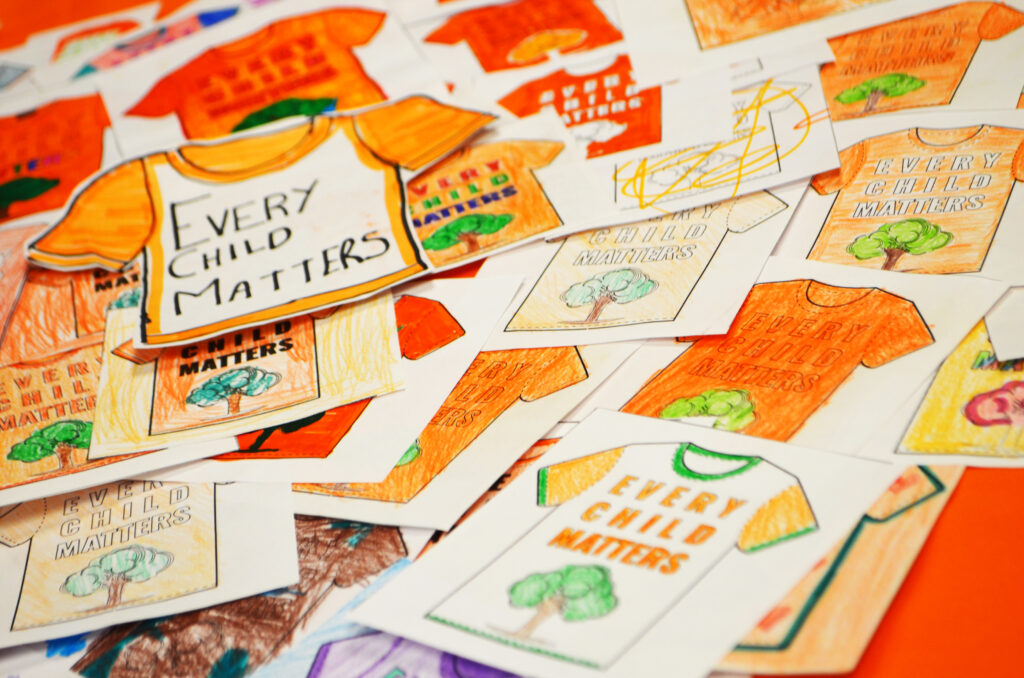By Tye Rhyno, Wood’s Homes Indigenous Liaison.
Today we acknowledge the inter-generational impacts on all Indigenous families from the residential and day schools throughout Canada.
We welcome the knowledge and wisdom from our Elders who come to support our children and families. The opportunities to ground, anchor, and instill a sense of belonging to a rich and diverse culture that comes from these lands. We acknowledge that ‘Every Child Matters’ – all of their uniqueness and vibrant ways of being.
We offer tobacco and prayers as we ask for guidance to do the right thing for those in our care. That we utilize our knowledge and power in a good way, that we do not forget what happened to many Indigenous families. Please walk with us and show us to be better humans together on this journey of healing.
What is Orange Shirt Day[i]?
Orange Shirt Day was inspired by residential school survivor Phyllis Jack Webstad, who shared her story at a St. Joseph Mission Residential School Commemoration Project and Reunion event held in Williams Lake, B.C., in the spring of 2013. Phyllis recounted her first day of residential schooling at the age of six, when her new orange shirt—given to her by her grandmother—was taken away from her.
Today, Orange Shirt Day exists as a legacy of this Project, and September 30 (the annual date of the event) signifies the time of year when Indigenous children were historically taken from their homes to residential schools.
In addition to simply wearing an orange shirt, Canadians are encouraged to learn more about the history of residential schools and their assimilation practices, drawing from Phyllis’ experience in particular.
At Wood’s Homes, we asked our staff and youth to celebrate their individuality through colour and creativity as part of our recognition of this important day:

[i] Wikipedia. (2020). Orange Shirt Day. Retrieved Sept. 28, 2020 from https://en.wikipedia.org/wiki/Orange_Shirt_Day




